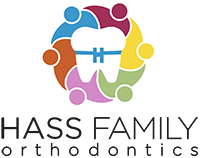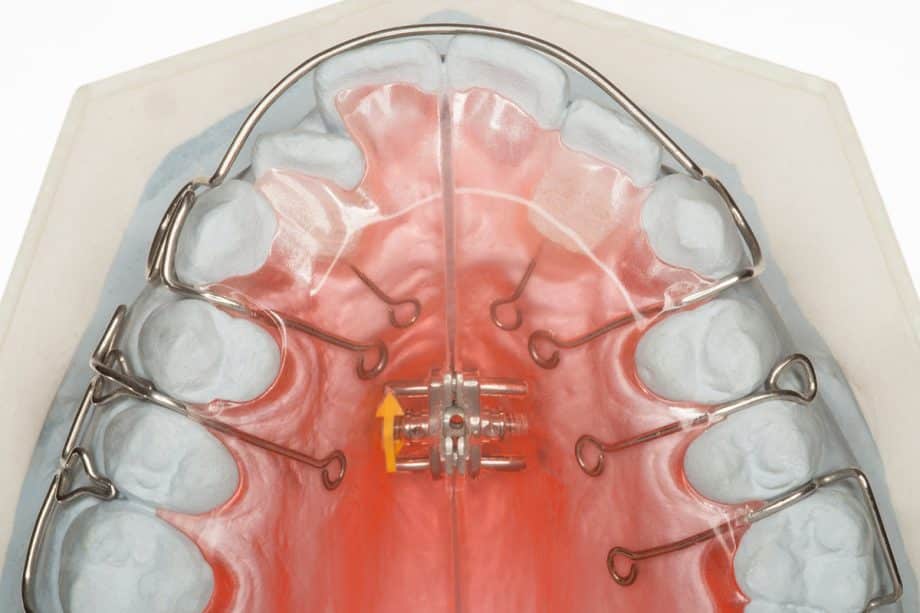At Hass Family Orthodontics, we’re often asked whether a palate expander will change the shape of a child’s face, or more specifically, their cheekbones. It’s a fair question. Orthodontic appliances are designed to adjust bone structure, so it’s natural for parents and patients to wonder how that might impact overall appearance.
Palate expanders are incredibly effective tools in modern orthodontics, particularly for younger patients. They create space in the upper jaw, improving dental alignment and making future treatment more efficient and comfortable. However, they also have subtle influences on the surrounding facial features, including the midface and cheekbones.
In this post, we’ll explore how palate expanders work, their relationship to facial structure, and whether they truly affect the appearance of cheekbones. We’ll also explain how our personalized orthodontic services ensure that changes to the facial structure are healthy, balanced, and beneficial.
What Does a Palate Expander Do?
A palate expander is an orthodontic appliance used to widen the upper jaw (the maxilla). It's commonly used in children and preteens because their bones are still growing and more responsive to change. By gently separating the two halves of the upper jaw at the mid-palatal suture—a natural growth seam—we can guide the jaw to widen gradually over time.
Why would we want to widen the jaw? Often, it’s to correct crowding, crossbites, or breathing issues related to a narrow palate. When there isn’t enough space in the upper arch, teeth may erupt out of alignment or become impacted. A narrow palate can also restrict airflow, contributing to sleep-disordered breathing and mouth breathing.
Expanding the palate not only resolves these issues but also helps us create a more balanced, functional bite. It can make future orthodontic treatment, like braces or aligners, easier and more effective. Most importantly, it addresses root causes early, which leads to better long-term results.
Can a Palate Expander Change Your Cheekbones?
Yes—but the changes are typically positive, subtle, and part of a broader facial balance. Because the palate (upper jaw) sits at the center of the face and connects to other facial bones, expanding it can have a mild effect on the surrounding facial structure, including the cheeks.
When we widen the upper jaw, the dental arch broadens as well, which can cause a slight outward shift in the soft tissues of the face. As a result, some patients may notice their cheekbones appear more defined or their midface looks fuller. This is especially true for children undergoing treatment during growth spurts.
These changes are not dramatic, and they are not considered cosmetic alterations. Instead, they are a byproduct of achieving a properly aligned, well-supported jaw. In many cases, the face appears more symmetrical and proportionate after expansion, which is a natural result of improving underlying bone structure.
We always emphasize that palate expansion is not intended to “reshape” the face in the aesthetic sense. Instead, our goal is to create a healthier bite and airway, and any enhancement to the facial profile is a bonus that comes with properly guided treatment.
Age and Timing Matter
One of the most critical factors in how a palate expander affects facial structure is the patient’s age. The mid-palatal suture fuses in the later teenage years, which means true skeletal expansion is much more effective when done early, ideally before puberty.
In younger children, the jaw bones are still flexible and growing, which allows for non-surgical expansion. This means the treatment can be performed gently and gradually with excellent results. Because the bones are still developing, the changes to facial structure, including the cheekbones, tend to be smoother and more harmonious with overall growth.
For older teens and adults, palate expansion becomes more challenging and may require surgical assistance (known as SARPE—surgically assisted rapid palatal expansion). These cases are planned with great care and in collaboration with other specialists when needed.
That’s why we recommend early orthodontic evaluations—usually around age 7—to identify whether a palate expander might be beneficial. When used at the right time, it’s a powerful tool to guide both dental development and facial growth in a healthy direction.
Long-Term Functional and Aesthetic Benefits
Palate expanders don’t just address immediate orthodontic concerns—they also contribute to long-term health and aesthetics. By creating more room in the upper jaw, we can help improve nasal breathing, which supports better sleep and overall well-being. For children who struggle with mouth breathing, snoring, or restless sleep, expansion can be a life-changing intervention.
From an aesthetic standpoint, the benefits are subtle but impactful. Patients often finish treatment with a broader, more natural-looking smile that fits their face better. Their cheekbones may appear slightly more prominent, and their midface may develop more fully, which creates an attractive balance.
We’ve seen many patients finish palate expansion with improved self-esteem, not because of vanity, but because their smile finally feels like it belongs to them. It’s a blend of function and form that highlights the beauty of thoughtful, customized orthodontic care.
At Hass Family Orthodontics, we’re proud to offer treatment that considers the whole face, not just the teeth. We use 3D imaging and personalized growth assessments to determine the right timing and approach for every patient, so you or your child receives safe, effective care that supports lifelong health.
Frequently Asked Questions About Palate Expanders
Will a palate expander make my face look wider?
It can cause a subtle broadening of the midface, especially in children. This is due to the gentle expansion of the upper jaw and surrounding bones. The result is usually a more balanced facial structure and a broader smile, not an exaggerated or unnatural look.
Is palate expansion permanent?
Yes, when completed at the appropriate age and followed by proper retention, the changes made by a palate expander are typically permanent. The expanded bone solidifies as it heals, and with consistent follow-up care, the new arch width and bite alignment can be maintained long-term.
At Hass Family Orthodontics, we believe in guiding facial and dental development with care, precision, and a deep understanding of each patient’s unique growth. If you're curious whether a palate expander could benefit you or your child, we encourage you to contact us to schedule a consultation and learn more about our comprehensive approach to orthodontic care.

